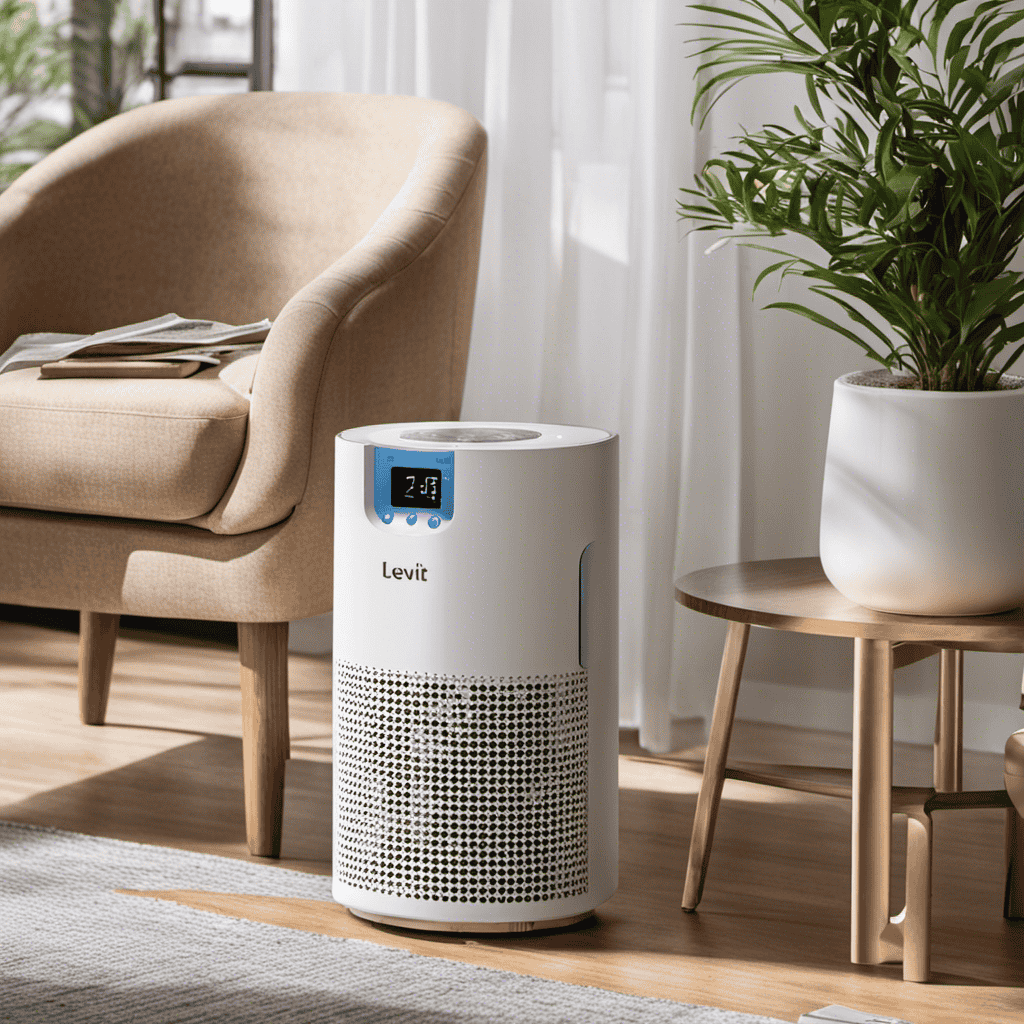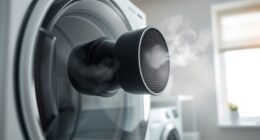I’ve unearthed the key to having your health insurance pay for your air purifier. It’s akin to stumbling upon a golden ticket for a more purified and healthful living environment.
In this article, I’ll guide you through the eligibility requirements, steps to submit a claim, and tips for selecting the right air purifier.
We’ll also explore how to provide supporting documentation and common reasons why health funds may deny coverage.
Get ready to breathe easy and make your health fund work for you.
Key Takeaways
- Meeting the eligibility requirements determined by your health fund is essential for coverage of an air purifier.
- Understanding your health fund’s policy and obtaining a formal prescription from your healthcare provider are necessary steps for submitting a claim.
- Selecting an air purifier that meets health fund criteria involves considering factors such as room size, filter quality, noise level, and adjustable fan speeds.
- Providing supporting documentation, including receipts, invoices, and medical documentation, is crucial for a successful air purifier claim.
Eligibility Requirements for Health Fund Coverage of Air Purifiers
To determine if your health fund will cover the cost of an air purifier, you’ll need to meet certain eligibility requirements.
The application process for health fund reimbursement can vary depending on your specific health fund provider. It is important to carefully review the terms and conditions of your health fund policy to understand if air purifiers are covered and what conditions need to be met.
Some health funds may require a doctor’s prescription stating the medical need for an air purifier. Additionally, there may be specific criteria such as the type of air purifier or the severity of your respiratory condition that must be met.
Understanding these eligibility requirements is crucial to ensure a smooth reimbursement process.
Now, let’s move on to the steps to submit a claim for your air purifier to your health fund.
Steps to Submit a Claim for Your Air Purifier to Your Health Fund
First, you’ll need to gather all the necessary documentation for submitting a claim to your health fund for the air purifier. To ensure your eligibility for coverage, carefully review your health fund’s policy regarding air purifiers.
Typically, health funds require specific criteria to be met for coverage, such as a medical diagnosis of a respiratory condition or allergies. Make sure you have a formal prescription from your healthcare provider that clearly states the medical necessity of the air purifier.
Additionally, you may need to provide proof of purchase or a receipt for the device. It is crucial to include any other supporting documents that your health fund may require, such as a detailed explanation of why alternative treatments are ineffective.
Tips for Selecting an Air Purifier That Meets Health Fund Criteria
When selecting an air purifier that meets criteria set by your health fund, you should carefully consider the size of the room it will be used in. Here are three tips to help you make the best choice:
-
Room size: Measure the square footage of the room where the air purifier will be placed. This information will help you determine the appropriate purifier size and ensure that it can effectively clean the air in the entire space.
-
Filtration system: Look for air purifiers with high-quality filters that can capture a wide range of pollutants, such as dust, pollen, pet dander, and smoke. HEPA filters are highly recommended for their ability to remove microscopic particles.
-
Noise level: Consider the noise level of the air purifier, especially if you plan to use it in a bedroom or office. Look for models with adjustable fan speeds, as this can help you find the right balance between air purification and noise reduction.
How to Provide Supporting Documentation for Your Air Purifier Claim
Consider gathering all necessary receipts, invoices, and medical documentation to support your claim for the air purifier.
When it comes to proving the effectiveness of an air purifier and the health benefits it provides, having detailed documentation is crucial.
Start by collecting receipts for your purchase, ensuring they clearly state the model, brand, and price of the air purifier. Additionally, gather any invoices or proof of payment to establish that the device was bought for medical purposes.
To further strengthen your claim, include medical documentation that supports the need for an air purifier. This may include doctor’s notes, test results, or medical reports that highlight your specific condition and its correlation to improved air quality.
Common Reasons Why Health Funds May Deny Coverage for Air Purifiers
One common reason why health funds may deny coverage for air purifiers is if the device is not deemed medically necessary. In such cases, the health fund may argue that the individual’s condition does not require the use of an air purifier for treatment or management.
However, there are alternative options for air purification that individuals can consider, even if their health fund denies coverage for a specific device. These options include:
-
HEPA filters: High Efficiency Particulate Air (HEPA) filters are effective in removing airborne particles, such as dust, pollen, and pet dander. They can be incorporated into existing HVAC systems or used as standalone units.
-
Natural ventilation: Opening windows and allowing fresh air to circulate can help improve indoor air quality. This can be especially beneficial in areas with low pollution levels.
-
Houseplants: Certain plants, such as snake plants and peace lilies, can help purify the air by absorbing toxins and releasing oxygen. Adding these plants to your indoor space can contribute to cleaner air.
While an air purifier may be the preferred option for some individuals, exploring these alternative methods can still improve indoor air quality and provide health benefits.
Frequently Asked Questions
What Are the Different Types of Air Purifiers That Health Funds Typically Cover?
There are various types of air purifiers covered by health funds. To choose the right one for your needs, consider factors like the size of the room, filtration system, and specific pollutants you want to target.
Can I Submit a Claim for an Air Purifier That I Purchased Before I Joined My Current Health Fund?
I’m not sure if I can submit a claim for an air purifier I bought before joining my health fund. I think it depends on the eligibility criteria for air purifier claims.
Are There Any Restrictions on the Cost of the Air Purifier That Can Be Claimed?
There may be cost restrictions on the air purifier that can be claimed. Eligibility criteria set by your health fund determine what expenses are covered. It’s important to review your policy for specific details.
Can I Claim a Portion of the Cost for an Air Purifier if I Only Use It for a Specific Medical Condition?
I can claim a portion of the cost for an air purifier if I only use it for a specific medical condition. It is important to understand the guidelines for claiming air purifier expenses and seeking health fund reimbursement.
How Long Does It Typically Take for a Health Fund to Process a Claim for an Air Purifier?
Typically, the processing time for health fund claims can vary. To maximize the chances of getting your air purifier claim approved, it’s important to provide all necessary documentation and meet the eligibility criteria.
Conclusion
In conclusion, getting your health fund to pay for your air purifier can be a breath of fresh air for your wallet and your well-being.
By following the eligibility requirements and submitting a thorough claim with supporting documentation, you increase your chances of success.
Remember to select an air purifier that meets the health fund criteria, ensuring you’re taking the right steps towards cleaner and healthier air.
Don’t let common reasons for denial discourage you; persist and enjoy the crisp, pure air that your health fund can help provide.










